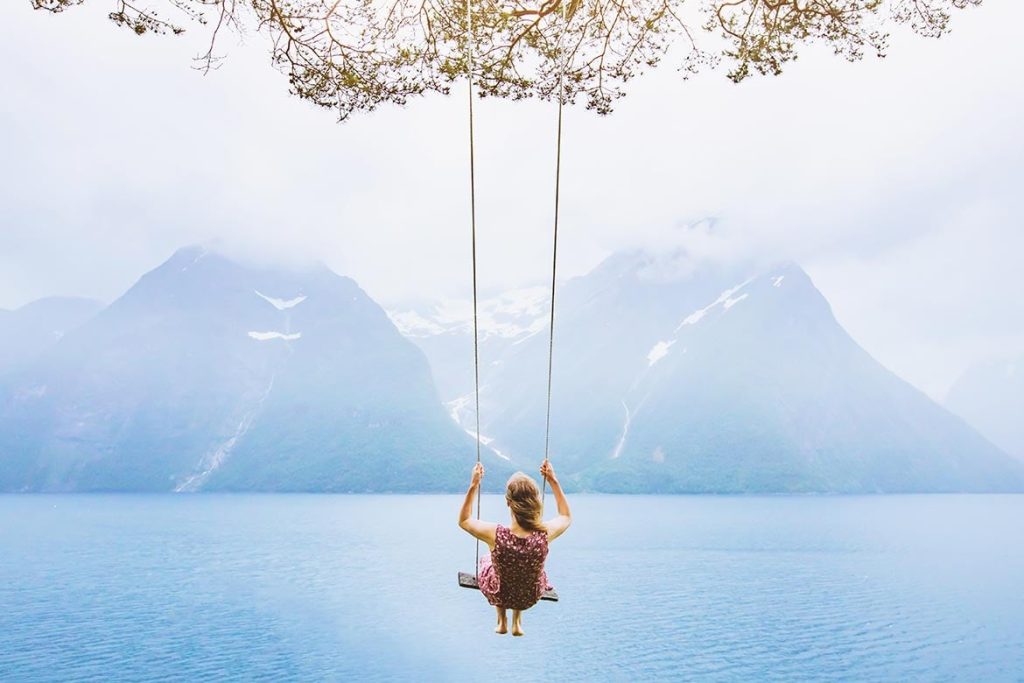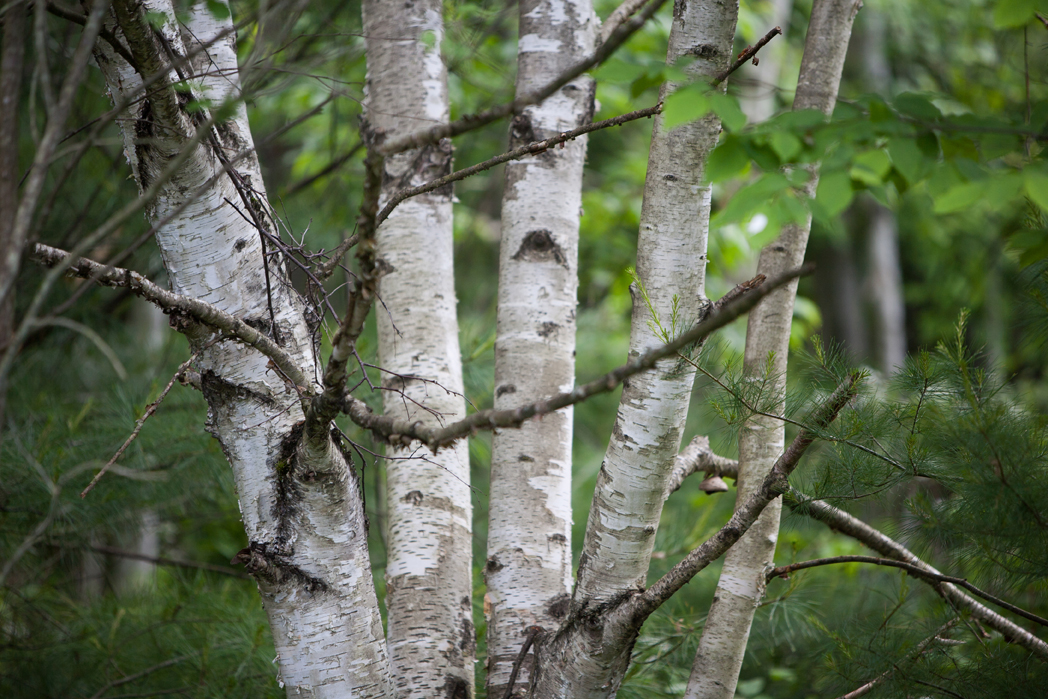Misery Bay is an isolated day park on the south shore of Manitoulin, with few visitors along the fifteen kilometers of trails that meander through mixed forest and rocky outcrops. This area is not just considered an ecologically distinct environment, it is one of the few areas in the world consisting of alvars. Thin soil covers the limestone rocks, and the area is prone to extremes of flooding and drought, producing unique flora similar to that found in the prairies. Within feet of starting down the trail we were already identifying plants that we had never seen before. Small purple Giesecke’s harebells grew in small cracks in the flat rocks and bright pink anemones waved in the slight breeze off Lake Huron. The trail is wide and easy to follow as we walked through the scant shade provided by the scrubby vegetation, and eerily carpeting the undergrowth were hundreds of flat, plate shaped spider webs. One step off the trail would have us ankle deep in webs, and I had no interest in discovering what type of spider called those webs home. Eventually the trail emerged onto the beach, soft brown sand underfoot and bright sun overhead.
This is where the alvar are clearly visible, blocks of flat dolomite or limestone jutting out into the cold lake. The blue waters extend to the horizon, small waves rolling into the shore as terns and seagulls swooped and soared over the beach. Thin reeds and sedges struggled for footing in the scant soil, and feathery prairie smoke flowers bloom close to the edge of the forest. After a hot day of hiking, it was a relief to pull off my shoes and socks and wade into the cool waters while my daughter wandered down the beach looking for shells. I sat on a rock in the water and felt the gentle pull of the cool water, and enjoyed the peace and silence of this remote place. We had the beach to ourselves, and spent the next hour leisurely exploring this unique area. We eventually headed back to our car in the search for food and lodgings, as our empty bellies were threatening a revolt if not fed soon. Tomorrow we had a long day, and a ferry ride on the famous Chi-Cheemaun and a hike on the most magical trail I had ever been on.

Our trip on the Chi-Cheemaun was uneventful, and we arrived in Tobermory by early afternoon of the next day. The day was cloudy, with a light rain cooling off the heavy heat and the wipers keeping time with the radio. On the straight road south towards Wiarton, a small sign appears almost hidden behind the greenery, and a rough dirt road leads away into the forest under a canopy of hardwood trees. After a short and bumpy ride, the path opens out into a small parking area, and across a clearing rises the remains on a once beautiful mansion. Today only a few walls still stand, empty windows framing the weeds growing up from the rocky soil. This is all that remains of the once lavish estate of Alexander McNeill, the Corran Estate named for his childhood home in Ireland. As with so many things, time passed, the McNeill’s passed away and the home fell into disrepair before being destroyed by fire. Now visitors can walk the ruins and find old orchards and gnarled apple trees still producing tart fruit. The soft rain provided the perfect accompaniment for our walk around the forlorn property. Trails, muddy with the rain, lead away towards the escarpment edge and a set of metal circular stairs appear, twisting down the cliff face. The trail continues, still a steep climb, down rocks wet and slippery and treacherous at times. It is all worth it, as the trees part and the bay appears, soft waves lapping gently at the rocky shore. Giant boulders sit on the water’s edge, which have broken free and tumbled down from the escarpment over the eons. Giant ferns erupt from the verdant undergrowth, and fallen cedars wear a mantle of green moss. Small snails make a slow journey across the trail, which my daughter dutifully relocated off the path to avoid being trod upon. Unfortunately, clouds of gnats also enjoyed the area, in thick clouds that penetrated our nose, mouth and eyes, and forced us to retreat back up that winding staircase to higher ground.
Here there is another trail for us to follow that parallels the escarpment face. This is a magical trail, where the fae folk must have settled when leaving Ireland. The undergrowth is thick and lush, and mushrooms and fungi hide behind old stumps. Small birds, never quite seen, twitter overhead and rustle the light leaves. A murder of crows takes flight from a boulder, creating a cacophony of noise that echoes through the forest. The rain continues to fall, dripping from leaf to leaf to leaf to fall gently on the soft ground. Thick blocks of dark grey rock, slowly peeling away from the land, offer footing for the occasional traveler. Thin gaps appear between the rocks with small plants poking out of the darkness. Those cracks become wider, black gaps in which trolls wait to reach up and grab your ankles. Occasional breaks in the trees reveal a grey sky reflected in the greyer waters of the bay, ripples in the distance that just might be water nymphs. Small movements seen out of the corner of your eye resemble prancing pixies, always dancing just out of sight. As the trail winds back towards the derelict mansion, small white fungus poke through the wet ground, and just as we suspected, these are the aptly named fairy finger fungi. We emerged from the green forest into the parking area, sure that we heard the titter of small voices following us to our car.


